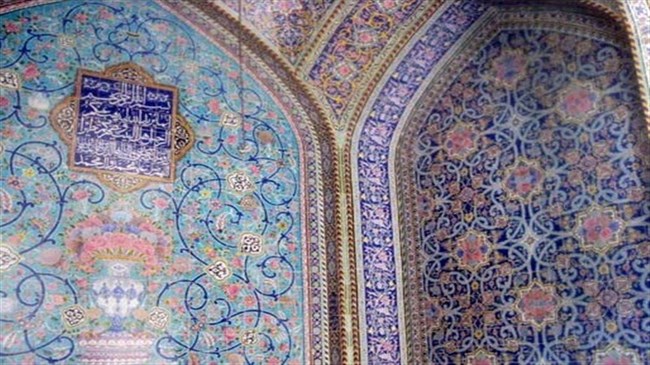
In fact, Safavid’s glorious heritage highly influenced Qajar period’s artists. They took advantage of all minor opportunities and created their own masterpieces of art and architecture. Qajar period’s artists were well aware of developments in Europe too. Regarding tile and tile mosaic, traditional methods were continued, but new ideas and design can be witnessed in their work, tasnimnews.com wrote.
According to Islamic morals, mosques and holy places were not allowed to be ornamented with human faces, real shapes of flowers, birds and animals.
Therefore related artists took advantage of several objects of nature and created their own imaginary designs such as Eslimi designs which ornamented Safavid mosques of 17th century.
New forms and shapes were invented during Qajar era. On the other hand, very few buildings were constructed during Qajar dynasty and unfortunately masterpieces of Safavid period were neglected too.
Very rich merchants and few governors spent a part of their financial possibilities on creation of new houses. The only major exception was Seyyed Mosque construction in Isfahan.
It is the largest mosque which was built during Qajar era in Isfahan. This beautiful monument was built upon the order of Hojjatoleslam Seyyed Mohammad Baqer Shafti. Donations of faithful Muslims and religious payment afforded all necessary expenses of the Seyyed Mosque.
The mosque was so large which was not completed at the time of Shafti. After his death, his son and grandson continued the work and completed the mosque.
The Seyyed Mosque has a four-eivan courtyard. There are entrances on the north and east, but the northern portal is the most magnificent entrance, which opens to Seyyed Street.
Some parts of this mosque are similar to the Imam Mosque of the Naqsh-e Jahan Square. A courtyard, a pool in the center of the courtyard and arcades which have been built between four eivans. The most important part of the mosque is the south eivan and the southern dome of the sanctuary. The main mihrab (altar) is located in the same sanctuary. Tiles and tile mosaics show bright colors of Qajar period. Plaster work, stucco moldings and paintings are other types of ornamentation used in the mosque.

Add new comment